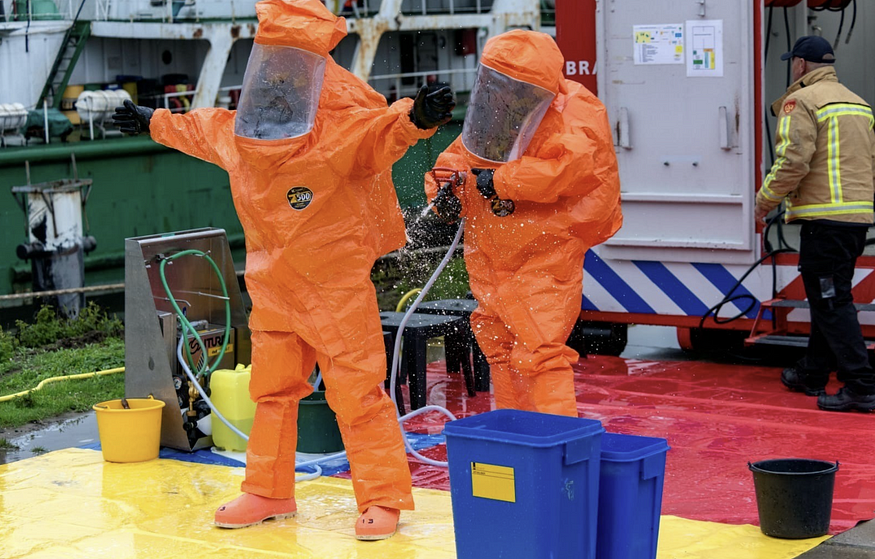
While working in Industrial or hazardous environments, people are exposed to toxic chemical substances which pose a significant risk to their health and safety.
This is where chemical protective clothing comes into picture, which is among the most critical forms of protection.
Through this blog we will get to know more about Chemical Protective Clothing and its key features as well as benefits.

The need for Chemical Protective Clothing
As we can already guess by the name, Chemical Protective Clothing acts as a physical barrier between the hazardous chemical substances and direct human contact.
Chemical substances can have various detrimental effects on the human body ranging from mild skin irritations to severe burns, respiratory disorders and in severe cases, even death
Key Features of Chemical Protective Clothing
- Material Resistance : Such clothings are manufactured using specialized materials which are carefully selected based on the specific substances workers may encounter.
- Sealing and Closure Systems : The sealing and closure system helps create a tight seal around the wearer’s body, preventing any potential entry points from chemicals.
Examples of sealing and closure mechanisms include elastic cuffs, zippered fronts, double-flap closures, and integrated gloves or boots.
- Breathability : With the main focus being preventing chemical exposure, comfort cannot be overlooked when manufacturing and designing chemical protective clothings.
Breathability features allows heat and moisture to escape while maintaining a barrier against chemicals.
2. Durability : As such clothings are subject to rigorous conditions and extreme chemicals. Durability should always, without fail should be one of its key feature.
Reinforced stitching, robust fabrics, and additional protective layers are incorporated to enhance the lifespan of the clothing.
Applications of Chemical Protective Clothings
- Industrial Settings : Chemical Protective Clothings are essential for workers in chemical manufacturing plants, refineries and petrochemical facilities as they are exposed to various chemicals, such as acids, solvents and corrosive substances.
- Emergency Response : During hazardous material incidents or chemical spills, emergency responders, including firefighters and hazmat teams, require chemical protective clothing to mitigate risks while carrying out rescue operations or containment efforts.
- Pharmaceutical Industry : Laboratories and pharmaceutical manufacturing facilities often handle potent chemicals and substances.
Proper protective clothing ensures the safety of workers involved in research, production, and quality control processes.
Cleanroom Environments : In highly controlled environments such as cleanrooms, chemical protective clothing helps maintain the integrity of the space by preventing contamination from the operator.
Checklist of Components that may form the Chemical Protective Ensemble:
· Protective clothing (suit, coveralls, hoods, gloves, boots);
· Respiratory equipment (SCBA, combination SCBA/SAR, air purifying respirators);
· Cooling system (ice vest, air circulation, water circulation);
· Communications device;
· Head protection;
· Eye protection;
· Ear protection;
· Inner garment; and
· Outer protection (overgloves, overboots, flashcover).
Conclusion
Chemical protective clothing serves as a crucial safeguard in environments where exposure to hazardous chemicals is a concern.
By providing a physical barrier against direct contact with harmful substances, it significantly reduces the risk of injuries, illnesses, and even fatalities.
As technology advances, we can expect to see continued improvements in the design and functionality of chemical protective clothing, further enhancing worker safety